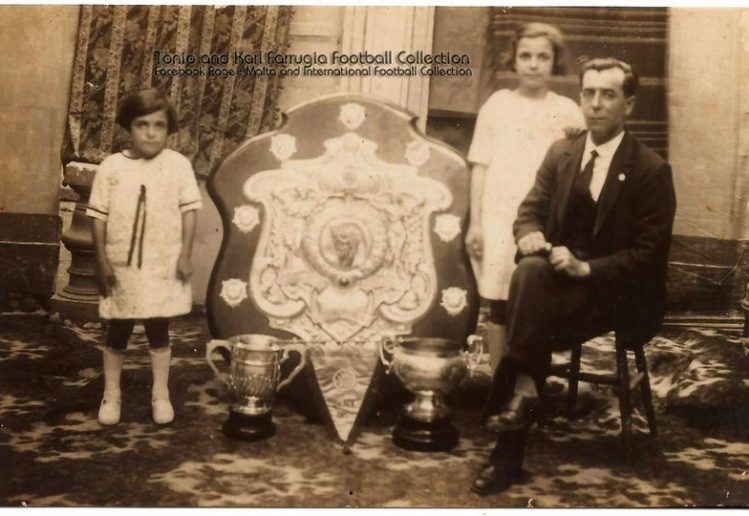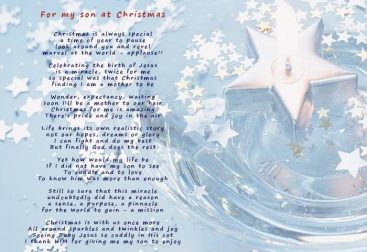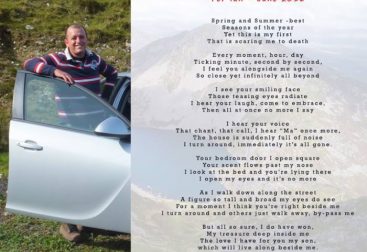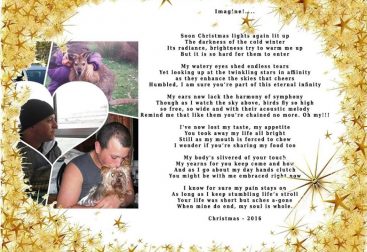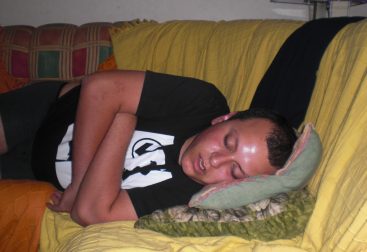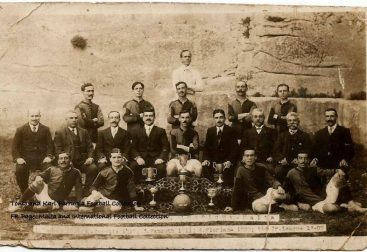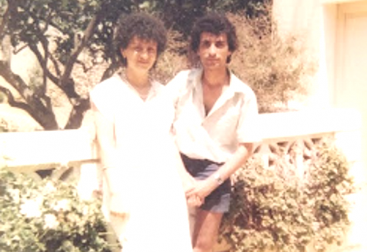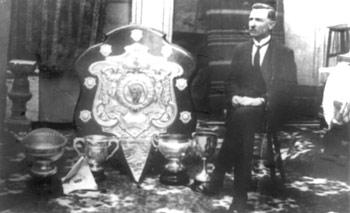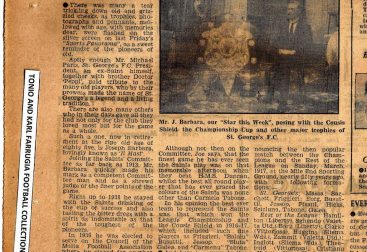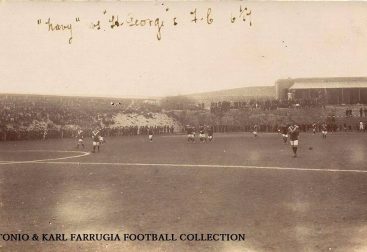It is not exactly a memory but living close to where my grandpa used to live and as a child going almost every day to his beautiful old house in St Gregory Street in Zejtun, so many memories come to mind when I think of my grandpa but three significant sides of his past so impressed me as a child and stuck auspiciously to the remembrance my dear grandpa.
He worked close to the Admiral. He was a great musician, a composer and band master. And he was one of the pioneers who brought football to Malta. Here I share with you a write-up that I found on the internet and an article published in the Times of Malta – Joseph Barbara ‘Il-Mast’ – A prominent figure during St George’s glory years (timesofmalta.com).
I am documenting the write up hereunder from a post made in fb group “Malta and International Football collection”. The bio of my grandpa is so correctly recorded but I do believe the picture is not of my grandpa and my dearest two aunts, Aunt Mary and Aunt Lily. I stand to be corrected.
JOSEPH BARBARA ‘IL-MAST’
06/01/1881 – 11/01/1975
Some names are synonymous to local clubs. You name is-Sur Ġann Bencini and immediately Melita comes to mind, you mention iċ-Chief or is-Sur Joe and you assimilate their name to the City Club, Bezzina is synonymous to Hibernians as much as Tedesco is to the Spartans and so on. These gentlemen committed themselves for many years to one club.
Similarly, in Pre War days, St. George’s FC had two main pillars running the club – Salvatore Gulia who was the Club Secretary and later President, and Ġużeppi Barbara known as ‘Il-Mast’ as he was a Bandmaster besides being St. George’s Football Club Secretary and MFA rep between 1913 and 1938.
———-
THE PICTURE
The pic shows ‘Il-Mast’ sitting comfortably and proudly with his two daughters next to the Cousis Shield which the Saints had just won in June 1927 defeating Valletta in the final with a solitary goal from Salvu Galea ‘Is-Sluta’ from the penalty spot.
The Cousis Shield for some ten years was our main knock out competition before the FA Trophy was introduced in 1935. It was sponsored by the Cigarette Company Cousis and Co, hence the name of the Shield, and it was a huge shield – the height of a some five year old child as we can see.
Today the Shield is found at the Floriana Football Club. They own it. In some controversial way, but whatever, they have it.
———–
IL-MAST
Joseph Barbara was born in Gudja on 6th January 1881 but settled in Cospicua at number 6 Strada Nuova soon after he married Carmela Tabone. He worked as Chief Messenger at the Drydocks, nearby to home.
Later, at the start of the Second World War, he moved with his family to Zejtun to escape the heavy bombing that fell on the Three Cities. He remained living in Zejtun till his death on 11th January 1975 at the age of 94 years.
Some other football administrators related to ‘Il-Mast’ are his children John Barbara who was a football referee soon after the war and Peter Barbara who served in the Committee of Rabat FC for many years in the forties and fifties being also club President in 1939-40 and in 1952-53. Peter’s daughter married former Rabat football player and later Committee member Ernest Chappell who passed away in June 2012.
Moreover former Gudja and later MFA General Secretary of the eighties and nineties Joseph Sacco was nephew of Barbara’s wife Carmela Tabone.
——
THE COUSIS SHIELD
As was the norm in days of old, Cups were quite often donated to MFA by different sponsors and their product label immediately became a household name in football circles.
The Gaelic Cup, the Aitken Cup (the famous ‘Tazza Il-Kbira’ or ‘In-Nanna’), the Johnnie Walker Cup are some fine examples of the tradition.
So when in 1915 the cigarette firm A.G Cousis & Co donated the MFA with its own sponsorship it was just following pattern and tradition – at least as far as the sponsor name is concerned. Otherwise the company was presenting something completely new.
They scrapped the traditional silver Cup with ears and presented the MFA with a large shield having a wooden frame about three feet tall and two and a half feet wide. On the wooden board there was an ornamental silver plaque having in its centre a lady with the Maltese flag in hand and next to her a football. There are two other statuettes on each side of the lady and two inscriptions – one reading ‘Cousis’ and the other ‘Mile End Sporting Ground’ as at the time football was still being played at the Ħamrun football ground. Along the Shield’s outer edge there were ten small plaques which had to be filled-in with the name of the winners in due course.
The Cup was donated to the MFA by Joseph Howard (1862 – 1925) who was the Director of the cigarette company. Later he was President of the Chamber of Commerce and in 1921 he became Malta’s first Prime Minister.
Joseph Howard died on 20th May 1925 at the age of 63 years. Howard Street in Sliema is named in his memory.
The crowd watches the Challenge Cup match between St George`s and Floriana (1-1) in 1909.
The feature about Joseph Barbara, published a few weeks ago, was a hit with Cospicua old-timers.
My phone never stopped ringing and I also received emails about the subject from Canada and Australia.
I had two engaging conversations with Joseph Barbara’s son Carmelo, and former Malta FA secretary Joe Sacco. They provided me with new information which I am including in today’s contribution.
Joseph Barbara was born on January 6, 1881 in Gudja and not in Zejtun as I stated in the previous article.
Barbara worked at the Admiralty Dockyard as head messenger and after marrying Carmela Tabone, he settled down at 6, Strada Nouva, Cospicua.
At the start of the Second World War, he moved his family to the relative safety of Zejtun where he died on January 11, 1975.
Joseph Sacco is a nephew on his mother’s side of Joseph Barbara. He told me that Barbara’s son John was a popular referee in the late forties and early fifties and his brother, Peter Barbara was, for many years, president of Rabat FC.
Peter’s daughter is the wife of Ernest Chappel, a popular Rabat FC player of the fifties.
I believe this additional information on the football tradition of the Barbara family will interest many old-timers as will the story of today’s write-up which takes us as far back as 1908-09.
Silver cup
In 1908, negotiations were opened between St George’s and Floriana to stage a match for a silver cup.
The talks were long and hard but at last, they came to a positive conclusion in February 1909. The parade ground at Imtarfa, situated far away from both Cospicua and Floriana, was chosen as the neutral venue for the match.
The publicity given to the match during the long months of negotiations caught the imagination of the Maltese.
Hundreds of bets were placed and as the date of February 14 ap-proached, the ‘Imtarfa Cup’ became the only topic of conversation.
It is estimated that over 10,000 spectators surrounded the square or took other vantage positions to see the game. Everything was very orderly and, although extra police were despatched to Imtarfa from Valletta, their services were not needed.
Colour Sgt. Hicks, of the Suffolk Regiment, was selected as referee and Lance Corporal Garvey and Gunner Shorey were the linesmen.
The game started with St George’s taking the initiative.
Floriana were more energetic but their passing game lacked the accuracy of that of the team from Cospicua.
The first chance to open the score fell to St George’s when they were awarded a penalty but the ball was kicked high over the ribbon.
Floriana’s Ruggieru Friggieri and Emmanuel Delia, of St George’s, got engaged in a sort of private duel on the pitch. Despite their lack of height, these two players were renowned for the crunch of their tackles!
The crowd enjoyed every minute of it. It seems that Delia suffered most from the encounter because twice he had to leave the pitch to attend to his injuries.
Midway through the first half, Masu Hicks sold Friggieri the dummy before shooting in the first goal.
A little later, however, Naudi equalised with a tremendous kick which almost broke the net-rigging.
On the resumption, Floriana won several corners but these were badly taken.
The minutes ticked away and the Saints’ goalkeeper Neriku Camilleri was kept busy by the Greens forwards but he did his job splendidly.
On the half hour, St George’s pressed forward in a desperate charge on the Irish fort but Pawlu Borg in goal was equal to the occasion and averted disaster for his team.
It was now Floriana’s turn to go on the offensive and Camilleri was again tested with two straight shots at his goal but once again he came out with flying colours.
At 4.45 p.m. Sgt. Hicks whistled the end of the match with the score still level at 1-1. A hurried consultation was held and it was agreed to play another quarter of an hour each way.
At the end of this period, however, no goals were scored and the referee declared a draw. After the match, St George’s accused Floriana of breaching the pre-match contract. The Saints complained that Floriana fielded a ‘picked team’ from all over the island.
In those days, when registration of players was unheard of, there was an unofficial agreement between teams representing a district that all their players had to come from the place they represented.
Floriana did not abide by this rule and St George’s felt cheated.
The arguments were long and widespread and there was a huge outcry for the game to be replayed but it took the two parties nearly three years before they reached an agreement and the issue was finally put to rest.
That, however, is another long story…
For the Record
Challenge Cup Match
(February 14, 1909 – The Imtarfa Parade Ground)
St George’s vs Floriana 1-1
St George’s: Neriku Camilleri, Lawrence Busuttil, T. Camilleri, John Born, Josie Fearne, Emmanuel Busuttil, Guze Tagliaferro, Masu Hicks, Emmanuel Delia, P. Thelma, G. Cordina.
Floriana: Pawlu Borg, Ruggieru Friggieri, Fredu Friggieri, Salvu Tabone, Guzi Mallia, Emmanuel Vella, F. Mifsud, W. Pisani, Guzi Vella, Salvu Samuel, R. Naudi.
Scorers: Hicks (St George’s); Naudi (Floriana).
Referee: Sgt. Hicks (Suffolk Regiment).

